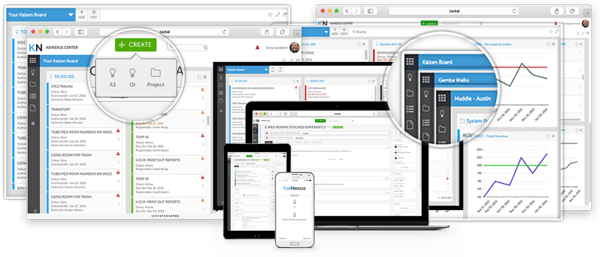 People react very positively to the concept of continuous improvement. They are a little less enthusiastic when it is framed as constant change. But, of course, improvement requires change. Our clients who’ve done it successfully have shared their best ideas for how to get there.
People react very positively to the concept of continuous improvement. They are a little less enthusiastic when it is framed as constant change. But, of course, improvement requires change. Our clients who’ve done it successfully have shared their best ideas for how to get there.
Acknowledge that Most People Don’t Like Change
People balk at trying new things for several reasons, including risk adversity. It’s much easier to keep doing the same thing and getting the same results than to experiment with something that might fail. It pays to acknowledge this and let everyone know that it’s all right to try something that doesn’t ultimately work. It’s the constant learning and experimentation that will eventually lead to better processes and outcomes.
Tap Into Hope
Even as people resist change, most know that there are things that can be improved. If you start to build a culture that embraces change by tackling the problems that frustrate employees, you can set the stage for success. Instead of a blanket call for change, ask employees what could make it easier for them to do their best work.
Identify Advocates and Influencers
Within every organization, you will find some people who are more open to change than others. Find these people and enlist them in your efforts. They can be put in the position to mentor others or lead improvement projects. Don’t let the org chart limit who you enlist in your pro-change coalition. It will be more effective if people in all departments and at all levels advocate for positive change.
Provide Structure
When you say “change,” some people will hear “chaos.” They are not crazy. They’ve probably seen many attempts at improvement go terribly wrong. That’s why it is essential to talk about managed change made after thoughtful deliberation. Implementing change management software will help reinforce that there will be a systematic, controlled approach to improvement.

Focus on Alignment
Everyone must understand that changes are made to further strategic goals aligned with the roles and responsibilities of each individual. There should be a clear line between the factors used to evaluate employee performance and the most important objectives of the organization. When people appreciate the vision and their place in it, decision making and enthusiasm improve.
Celebrate Small Wins Often
Change doesn’t have to be disruptive or revolutionary to make a difference. In fact, companies that are great at continuous improvement get there though a series of incremental changes that produce results. The more of these that you can identify and celebrate, the better. Improvement is contagious, and when people are recognized and rewarded for implementing new ideas, others will catch on.
Foster Communication and Transparency
Not every improvement project will go smoothly, and that’s OK. What’s important is to talk about the experience and learn from each attempt at change. Communication should be both top-down and bottom-up, and people should feel free to express their frustrations and challenges.
Measure Activity, Engagement, and Results
It’s difficult to lead a culture of continuous improvement without visibility into the efforts of your team. The change management system you choose should make it easy for you to understand who is actively working on improvement projects, the level of engagement, and the impact of each process change. Sharing those metrics will signal to the organization that positive change is a priority.
Leading your team through an era of constant change won’t always be easy, but the alternative is stagnation. The good news is that if you can get past the initial fear and inertia, people can get excited about creating better processes and achieving objectives once considered impossible. It only takes a few little sparks for the fireworks to begin.




Add a Comment